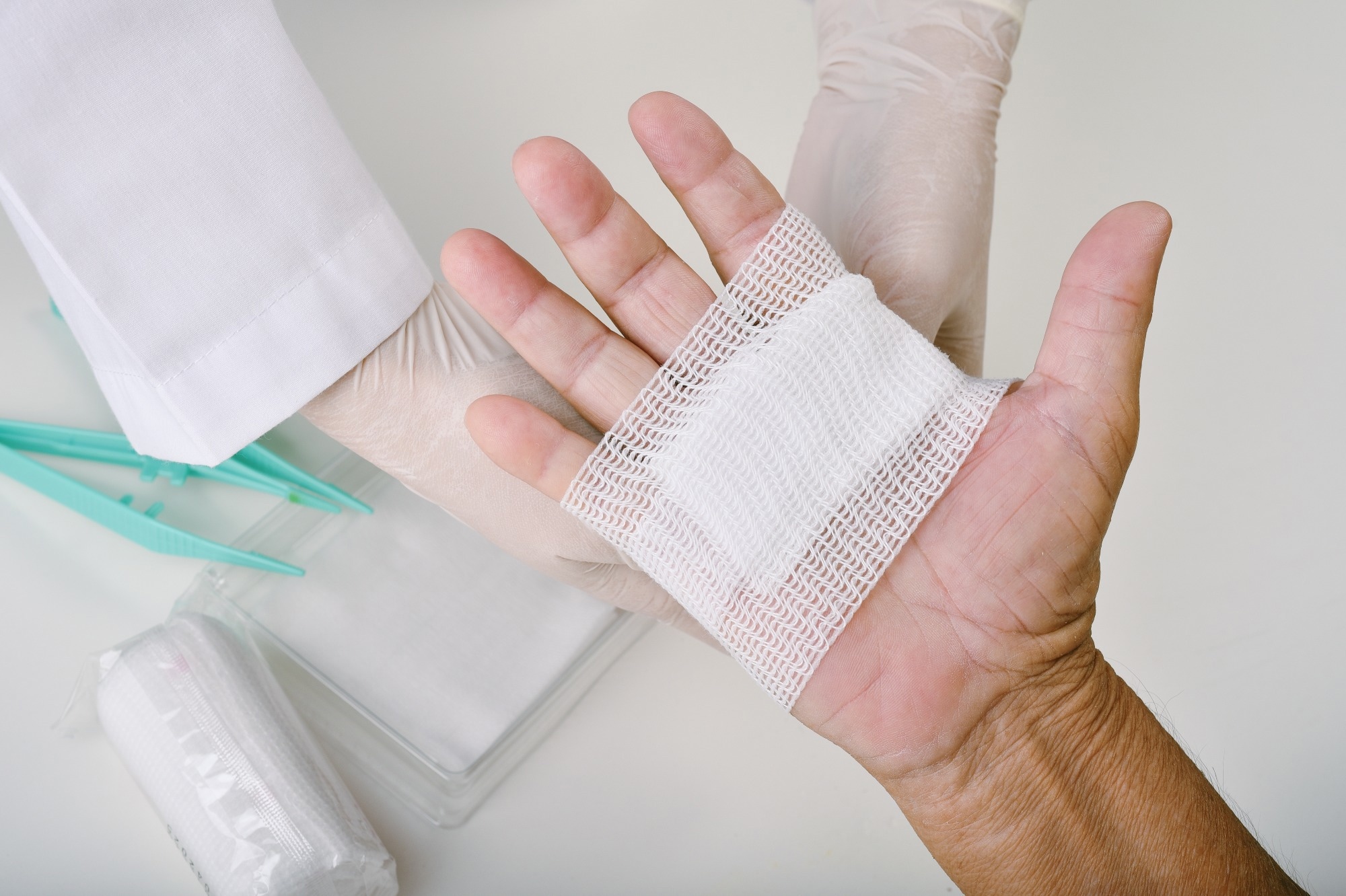In a recent article published in Scientific Reports, researchers describe the development of advanced wound dressing materials using electrospun fibers made from poly(ε-caprolactone) (PCL) and poly(vinyl pyrrolidone) (PVP).

Image Credit: ARTFULLY PHOTOGRAPHER/Shutterstock.com
This work focuses on enhancing these fibers with a chitosan-based nanocomposite (ChAgG) containing silver nanocrystals and graphene oxide. The study evaluates the mechanical properties, antimicrobial efficacy, and overall performance of the fibers, offering insights into their potential clinical applications.
Background
Wound healing is a complex biological process often impeded by infections and the insufficient properties of traditional dressings. These dressings typically lack the necessary antimicrobial effects and mechanical strength for effective healing.
Recent advances in nanotechnology have created new opportunities to develop materials that address these limitations. Silver nanoparticles are widely known for their antimicrobial effects, while graphene oxide provides enhanced mechanical strength and biocompatibility. Chitosan, a biopolymer derived from chitin, is recognized for its wound-healing properties, including cell proliferation support and anti-inflammatory effects.
By combining these materials into a single composite, the aim is to harness their individual benefits, creating a multifunctional dressing designed to improve wound healing outcomes. The Current Study
The study adopted a systematic approach to synthesize the ChAgG nanocomposite and fabricate the electrospun fibers. Initially, a 2 % w/v chitosan solution was prepared, with silver ions added at a concentration of 0.6 % v/v. This reaction was conducted at 75 °C for 30 minutes, allowing the silver ions to reduce into nanocrystals while preserving the stability of the chitosan and graphene oxide components.
After synthesis, the solid nanocomposite was collected using a filtration setup. The electrospinning process was then used to produce fibers from the PCL/PVP matrix, incorporating different concentrations of the ChAgG compound. The morphology, diameter, and surface texture of the resulting fibers were analyzed using scanning electron microscopy (SEM).
Thermogravimetric analysis (TGA) was conducted to evaluate thermal stability, while energy dispersive X-ray spectroscopy (EDX) provided insights into the elemental composition of the fibers. Mechanical testing was performed to determine tensile strength, elastic modulus, and elongation at break, ensuring the fibers met the necessary criteria for wound dressing applications.
Results and Discussion
The results demonstrated that the incorporation of the ChAgG nanocomposite significantly influenced the properties of the electrospun fibers.
SEM analysis showed that the fibers maintained a uniform morphology, with diameters ranging from 0.6 to 2.9 μm, depending on the nanocomposite concentration. EDX analysis confirmed the successful integration of silver nanocrystals into the fiber matrix. TGA results demonstrated enhanced thermal stability, with critical degradation temperatures reaching up to 780 °C at the highest nanocomposite concentration of nanocomposite.
Mechanical testing showed that the fibers achieved a balance of strength and flexibility, which is critical for effective wound protection. The tensile strength and elastic modulus were optimized to ensure the fibers could endure the stresses typical of wound dressing applications.
Antimicrobial testing against common pathogens demonstrated a notable reduction in bacterial viability, emphasizing the potential of these materials to prevent wound infections. The synergistic effects of the components were evident, with graphene oxide enhancing the dispersion of silver nanoparticles, which improved their interaction with bacterial cells while maintaining the biocompatibility of the dressing.
Conclusion
Researchers successfully developed a novel electrospun fiber system incorporating a chitosan-based nanocomposite with silver nanocrystals and graphene oxide. The findings indicate that these fibers possess enhanced mechanical properties, thermal stability, and significant antimicrobial activity, making them suitable candidates for advanced wound dressing applications. The research contributes to the growing body of knowledge in the field of biomaterials, emphasizing the importance of integrating nanotechnology into wound care solutions.
Future research could focus on in vivo evaluations to assess clinical efficacy and explore additional modifications to tailor these materials for specific wound healing needs. These advanced dressings hold potential for enhancing wound management, supporting innovative therapeutic approaches in healthcare.
Journal Reference
Estevez Martínez Y., et al. (2024). Antibacterial nanocomposite of chitosan/silver nanocrystals/graphene oxide (ChAgG) development for its potential use in bioactive wound dressings. Scientific Reports. DOI: 10.1038/s41598-024-75814-2, https://www.nature.com/articles/s41598-024-75814-2